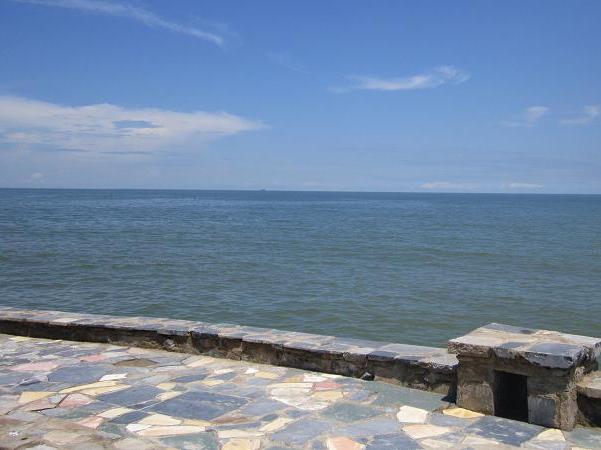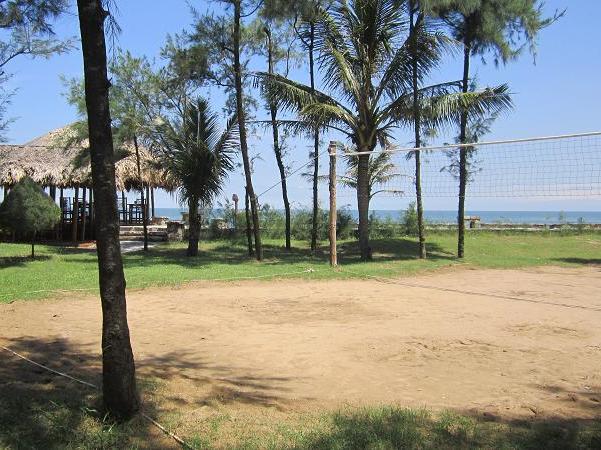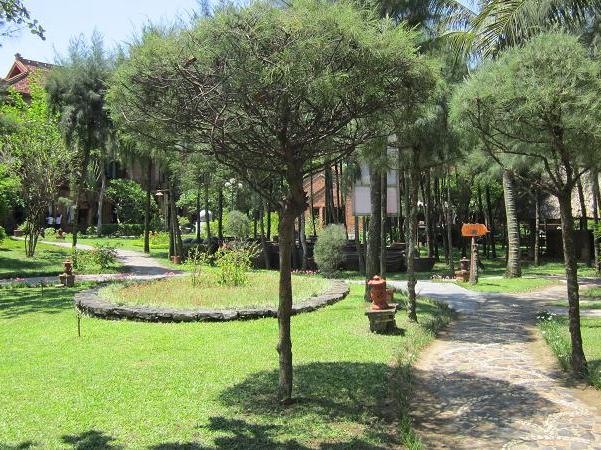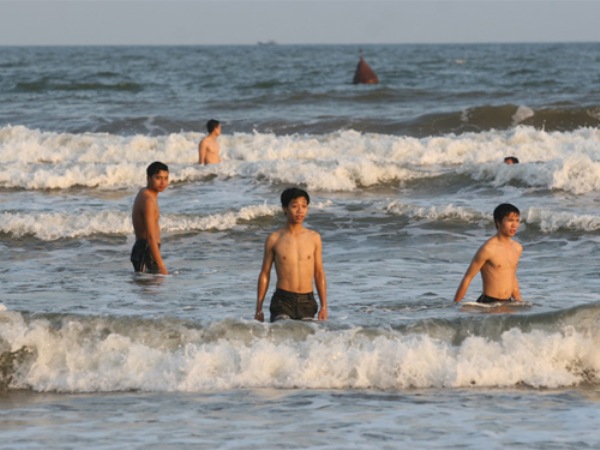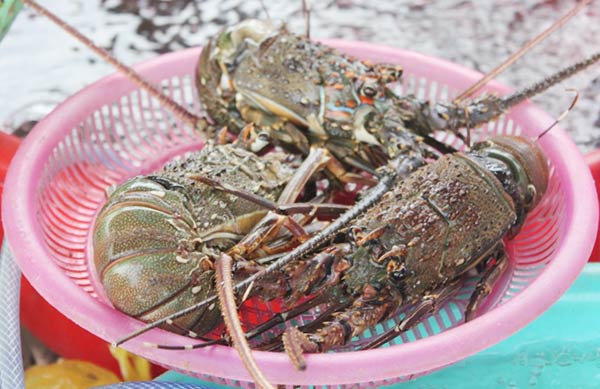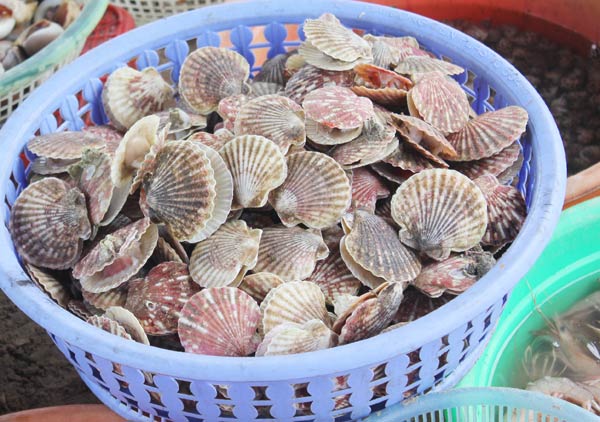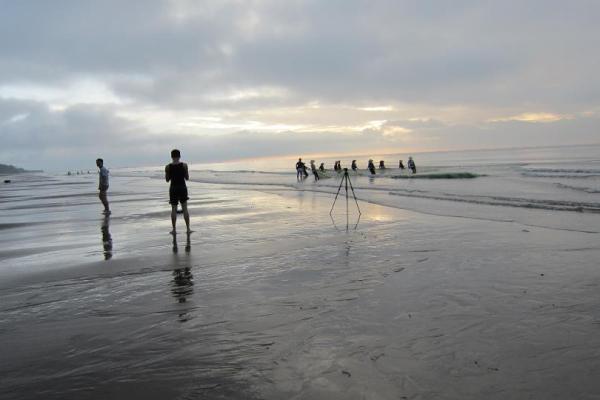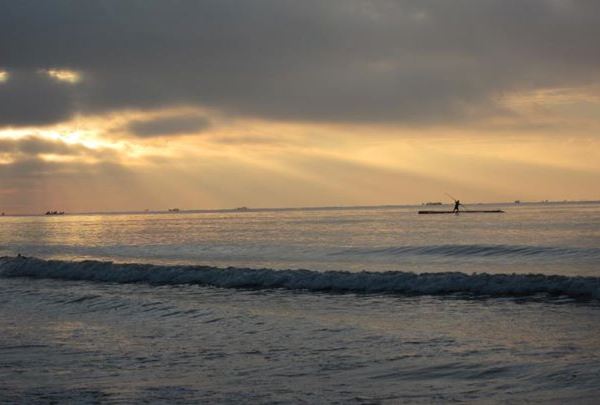A pristine hick area with pure ecological environment created partly by the green of coconut tree lines and large fruits gardens has made Ben Tre a nation’s precious green ecological complex in southern Vietnam.
"Who’s standing there looking like a coconut shadow, with long hair gone in the wind? .. That is Ben Tre’s girl...” is the famous song about Ben Tre, a green land with coconut trees, fruits gardens, rivers and canals...
Ben Tre province (a delta province) is located at the end of the Cuu Long River Delta. It has borders with the East Sea to the east, with 60 kilometer-long coastline. The province is 2,322 sq. km2, around 85 kilometers far from Hochiminh City.
Ben Tre is featured with a plain geography, which is scattered around by sand dunes and adorned by rice fields, fruit plant gardens, and numerous rivers and streams, canals and arroyos. The four Tien Giang river branches, including My Tho, Ba Lai, Ham Luong and Co Chieu rivers, split Ben Tre into 3 islands of Minh, Bao, and An Hoa. All contribute to an ecological system of rivers, canals, arroyos and green trees, facilitating transportation, hydro-electricity, and more importantly, ecological tourism potential.
Climate
As a typical tropical area, Ben Tre lies in the monsoon tropical climate with two seasons: rainy season from May till October, and dry season from November till April. The annual average temperature is 26oC-27oC. The average rainfall is 1,250-1,500mm/year. It is the favorable natural conditions that help Ben Tre gain such a pure and green ecological environment.
Formation
Ben Tre used to be part of Hoang Tran palace, in Hoang Tran town, southern Vietnam, which was set up in 1803, and renamed into Vinh Tran in the following year. In 1832, King Minh Mang enlarged and split the town into two provinces, An Giang and Vinh Long. The latter comprised 3 districts Hoang An (or Hoang Tri) (today’s Ben Tre), Dinh Vien (today’s Vinh Long), and Lac Hoa (today’s Tra Vinh). Ben Tre was then the “arrondissement administratif” (important administrative county) of Vinh Long province. During the French occupying period, the districts (counties) were to be turned into provinces according to the Decree No. 20/12/1899 by the Governor-General of Indochina. A part of Vinh Long, particularly Hoang An District, became the naturally favored Ben Tre Province of today.
What is it famous for?
Historical value
One of the attractive points to tourists is Ben Tre’s historical values. During the severe wars against foreign invaders, Ben Tre was regarded as the “General Uprising Land”, which initialized the armed patriotic struggle high tide against Ngo Dinh Diem puppet regime by Southern Vietnam’s Liberation Front. The war became most fierce in 1960. Regardless of genders, ages, and occupations, thousands of Ben Tre people arose, fight and heroically died for their homeland liberation. Drawn by Ben Tre locals, people in Sa Dec, Vinh Long, Tra Vinh and elsewhere together violently arose. Thanks to the very Vietnamese heroic spirit like in Ben Tre, finally we have a peaceful Vietnam of today. A heroic and historical Ben Tre is actually worth a visit by both inbound and outbound tourists.
The green ecological complex
If you could look through your airplane’s window down to Ben Tre, you would feel like it were some heaven’s green land! Covering the whole land is the color of green, green, and green trees adorned with pure rivers meaderring in between rows of trees. When seen from above, these rivers look like huge tortuous gentle snakes, which probably stimulates your curiosity For concrete understanding, Ben Tre is the convergence of three huge islands, An Hoa, Bao, and Minh, who owed their division from the four significant rivers: Tien Giang, Ba Lai, Ham Luong, and Co Chien. Besides so many rivers & canals, the province is favored by nature in terms of a plentiful fauna-flora system, and a pristine series of all-the-year-round green tropical fruits gardens (hick towns). All these excellent natural elements lead to a fresh-aired environment of large green coconut & fruits gardens, and an ecological system, enchanting a huge number of tourists, especially foreign ones.
Tropical Fruits & Food
The extremely tasty tropical fruits and local delicacies are desired by all visitors. Tropical fruits are available at all fruits gardens during the year, for instance, sweet mango, custard-apple, mangosteen, durian, longan, rambuton, and other kinds of fruits with segments. You can also easily find typical southern specialties here, for example, salted fish (incld. small fish paste or “mắm tép”, “còng”, “nêm”, “ruốc” or salted shredded meat, field fish, etc.), sour-tasted soup (such as fish soup cooked with carambola, tamarine, “chùm ruột”, “bần”, and fresh herbs like peppermint, beansprouts, banana flowers), bitter-tasted soup (such as bitter-melon and centella soup), braised fish (such as anabas, ball fish, “kèo” fish, “lóc” fish, and so on), kinds of shrimp, crabs, eel, frog, and so forth.
Particularly, Ben Tre boasts a unique specialty, coconut products which are available at coconut gardens. Examples are coconut candies, coconut oil, coconut quintessence, etc, from which about 50 dishes can be made. Theses days, this special kind of delicacy is sold to many areas nationwide. Besides, some other delicacies of Ben Tre are also well known, such as My Long girdle cake, Son Doc “phồng tôm” (rice chupatty with powdered shrimp), Phu Le rice alcohol, and so forth. Should you have a chance to trip around, tasting those specialties, I can assure that you will never forget such a marvelous feeling!
Religious life
As in other areas of Vietnam, Ben Tre’s Buddhism has also much improved. Famous pagodas in the region are Hoi Ton, Tuyen Linh, and Vien Minh. All of those have a long history of around 3 centuries, and are amongst the worthy destinations for those who are interested in religion, besides ecological tours.
Festivals
Festivals in Ben Tre contain all the seaside villages’ festive features. The two most important ones are Phu Le and Nghinh Ong festivals. Phu Le is a temple in Ba Tri district, organizing festivals twice per year to pray for favorable weather and fruitful crops. Wheareas the latter is held annually for fishermen to gather and amuse themselves through a series of ceremonies, entertainment, and feats activities. If luckily arrived on these occasions, you would be enchanted by the cosy world of people in waterway & riverside area.
How to get there?
Ben Tre is only 14 and 85 kilometers far from My Tho and Ho Chi Minh City respectively. What make most tourists feel excited is that they can take a ferry-boat from My Tho to Ben Tre. For a local journey, you may hire a high-speed ship at a very reasonable price.
Tourist activities
Phung Islet or Ong Dao Dua Islet (Cồn Phụng or Cồn Ông Đạo Dừa): numerous original architectural works, and craft villages (producing coconut products and honey
Snail Islet or Hung Phong Islet (Cồn Ốc or Cồn Hưng Phong): a lot of coconut and fruits gardens
Fairy Islet (Cồn Tiên): a beautiful sand bank, the ideal annual recreation place of many locals
Vam Ho Bird ground (Sân chim Vàm Hồ): shelter of nearly half a million sorks and night herons, and other wild species, date-palm jungle, and a plentiful flora (incld. water coconut, custard-apple, guava, French beans, date-palm, sea water morning glory, etc.)
Cai Mon Fruits Garden (Vườn cây ăn trái Cái Mơn): the cradle of Southern fruits, containing a number of tropical fruit kinds (sweet mango, durian, rambuton, longan, mangosteen, etc.), and many animal-shaped plants
Dai Dien ancient House (Nhà cổ Đại Điền): a famous beautiful old house of the Huynh, remaining in its origin









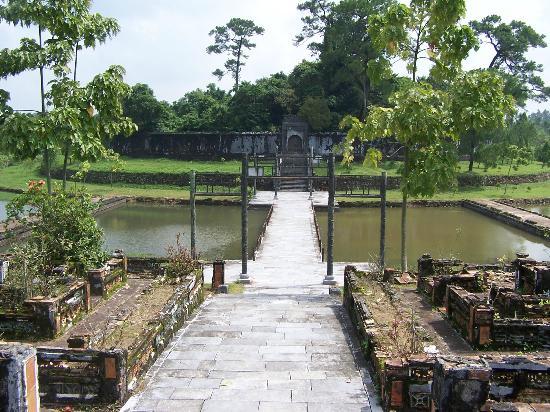
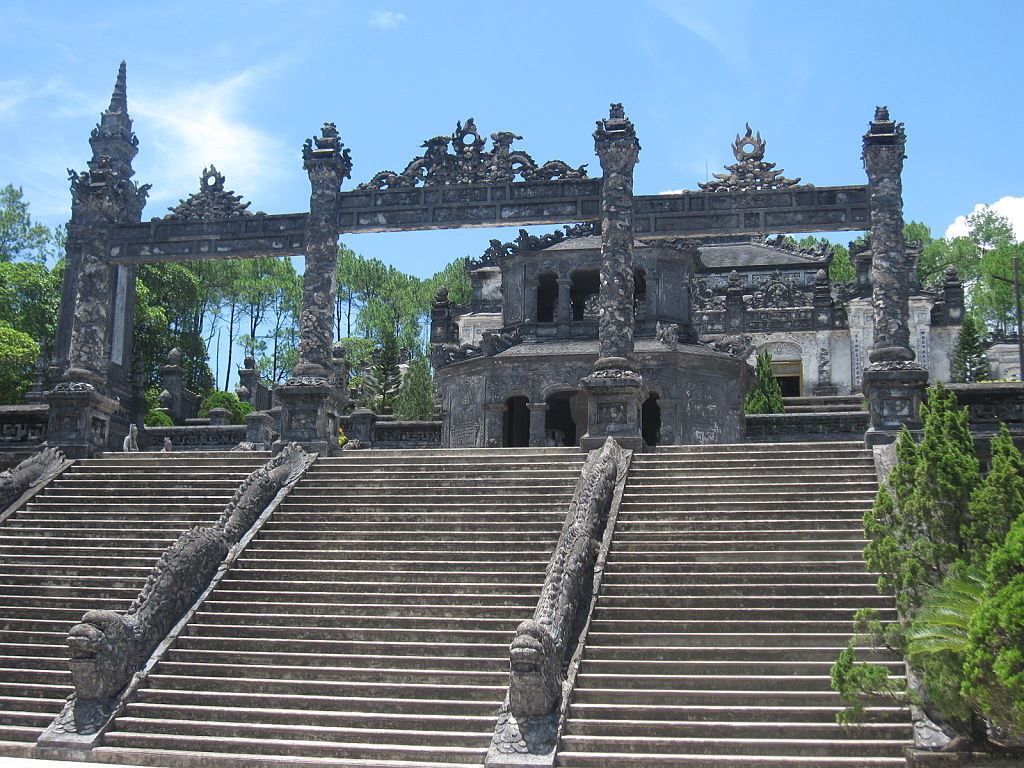
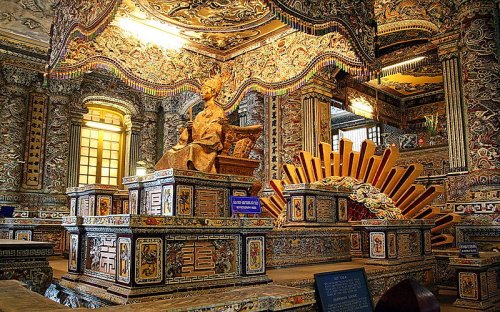





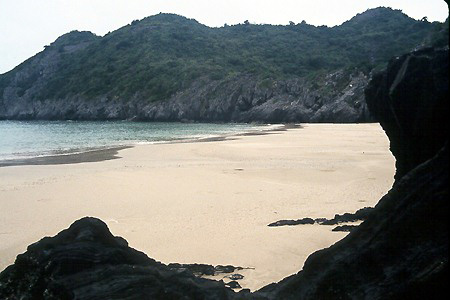 We visited Quan Lan Communal House to see with our eyes the delicate art of carving with various designs. The images of dragons are carved lively with different shapes, such as the dragon flanking a moon, a dragon keeping the “Tho” (longevity) script in its mouth, a dragon rolling water, a daisy turning into dragon, etc. Also, images of silk moths and shrimp in the dynasties of Ly, Tran, Le and Nguyen are also skilfully depicted because the trade of growing mulberry and raising silkworm and seafood catching once strongly developed in the area for
We visited Quan Lan Communal House to see with our eyes the delicate art of carving with various designs. The images of dragons are carved lively with different shapes, such as the dragon flanking a moon, a dragon keeping the “Tho” (longevity) script in its mouth, a dragon rolling water, a daisy turning into dragon, etc. Also, images of silk moths and shrimp in the dynasties of Ly, Tran, Le and Nguyen are also skilfully depicted because the trade of growing mulberry and raising silkworm and seafood catching once strongly developed in the area for 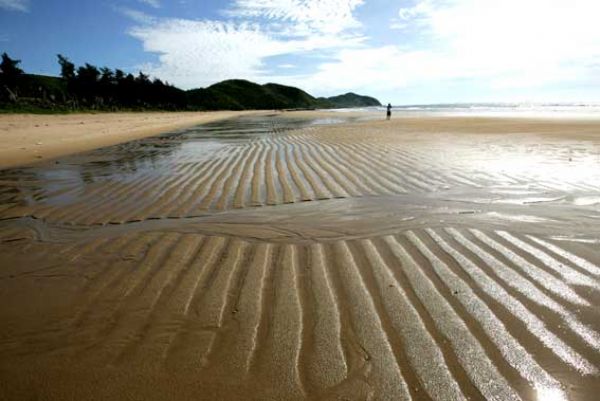 Primitive beauty of beaches
Primitive beauty of beaches At sunset, Quan Lan became deserted and there were only some tourists on three-wheel taxis returning to their hotels on the only small road on the island and a few motorbikes passing by. When night falls, the scene is very romantic with the whistles of the poplar forests, calls of seabirds, soft and low whisperings of waves flapping on the seashore. From a far, the light from ships on the sea to catch cuttlefish reflects on the sea, creating a dreamlike landscape.
At sunset, Quan Lan became deserted and there were only some tourists on three-wheel taxis returning to their hotels on the only small road on the island and a few motorbikes passing by. When night falls, the scene is very romantic with the whistles of the poplar forests, calls of seabirds, soft and low whisperings of waves flapping on the seashore. From a far, the light from ships on the sea to catch cuttlefish reflects on the sea, creating a dreamlike landscape.




















